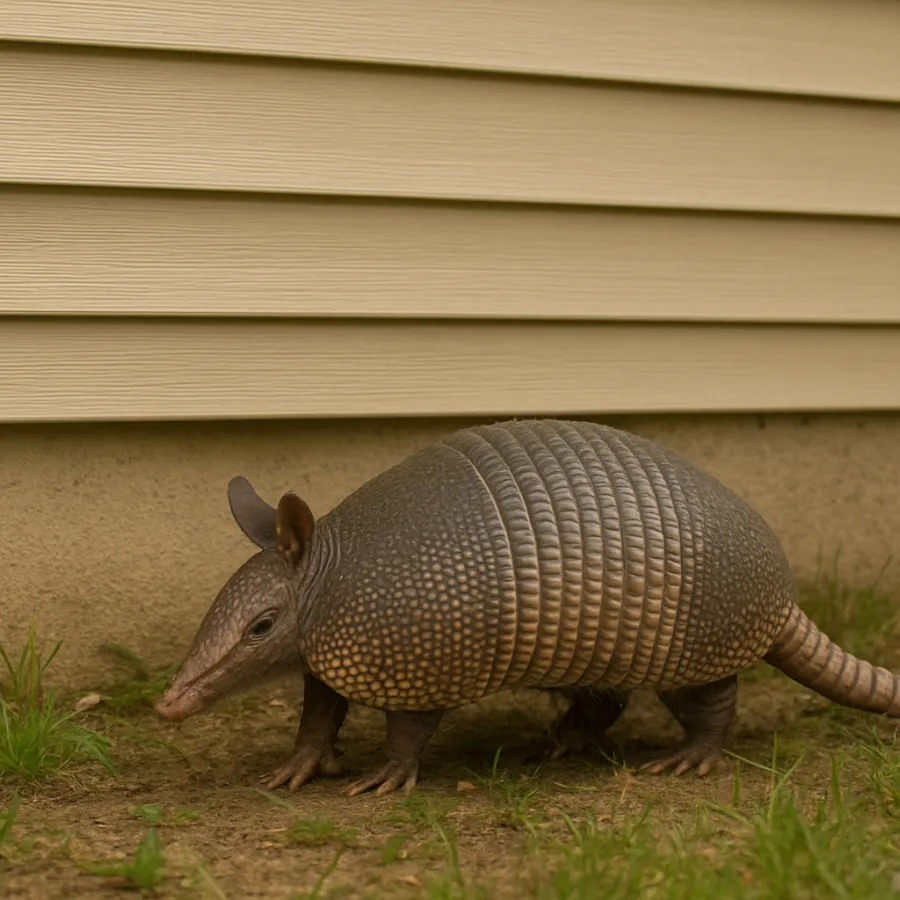Armadillo Removal & Control Services
Armadillos may seem harmless, but when they begin digging around homes, they can cause extensive damage to lawns, landscaping, and foundations. Cingo Home provides professional, humane armadillo removal and control servicesto protect your property and prevent continued destruction.
About Armadillos
The nine-banded armadillo (Dasypus novemcinctus) is commonly found throughout the Southeast, including Georgia. Armadillos are primarily nocturnal, though they may occasionally be active during daylight hours, especially during cooler months.
Armadillos have poor eyesight but an excellent sense of smell, which they use to locate insects underground. This behavior often brings them into residential yards, lawns, gardens, and landscaped areas, where they forage for food.

Armadillo Behavior & Digging Habits
Armadillos are solitary animals and are best known for their digging behavior. They feed primarily on insects and invertebrates, especially grubs, beetles, and earthworms. Because armadillos forage nightly and cover large areas, damage can spread quickly across a property. Main behaviors include:
- Mostly nocturnal activity
- Strong digging claws and powerful forelimbs
- Extensive foraging holes and shallow trenches
- Burrows that may extend several feet underground
- One litter per year, typically producing identical offspring
Damage Caused by Armadillos
Armadillo activity can result in significant and ongoing property damage, particularly to lawns and landscaped areas. Left untreated, armadillo damage often worsens over time as animals return to the same feeding areas. Common armadillo-related problems include:
Numerous holes and trenches in lawns and turf
Damage to flowerbeds, gardens, and decorative landscaping
Undermining of sidewalks, driveways, patios, and foundations
Soil displacement near structures
Increased risk of trip-and-fall hazards
Professional Armadillo Removal Services
Cingo Home specializes in safe armadillo removal using proven wildlife control techniques. Because armadillos are persistent and may revisit the same properties, effective control requires a strategic approach.Our armadillo control process includes:
Full property inspection
Identification of active foraging and burrowing areas
Humane armadillo removal methods
Recommendations for habitat modification
Long-term prevention strategies
Schedule Professional Armadillo Removal Today
If you're seeing holes, trenches, or repeated lawn damage, don't wait. Armadillos can quickly cause extensive property and landscape damage if left untreated.
Contact Cingo Home today to schedule an inspection and get expert armadillo control you can trust.
📞 Call 855-216-7068 or click below to request service.
Request a Service or More Info

